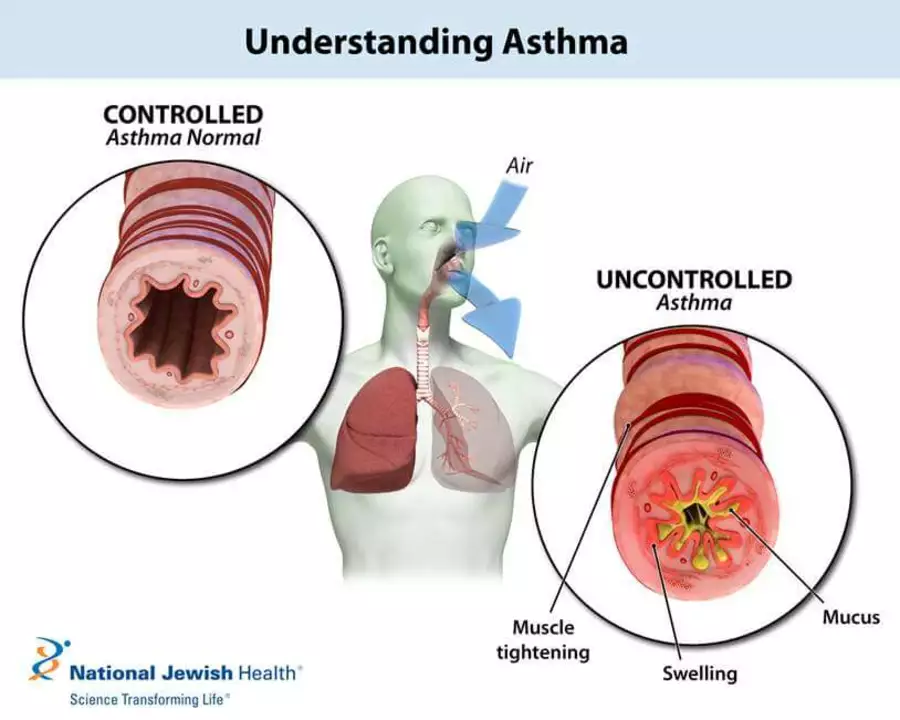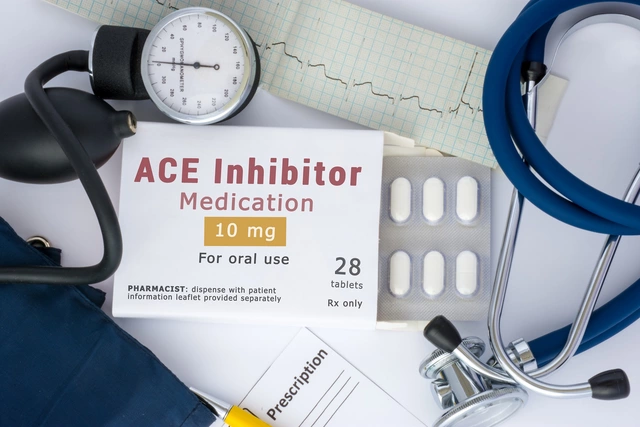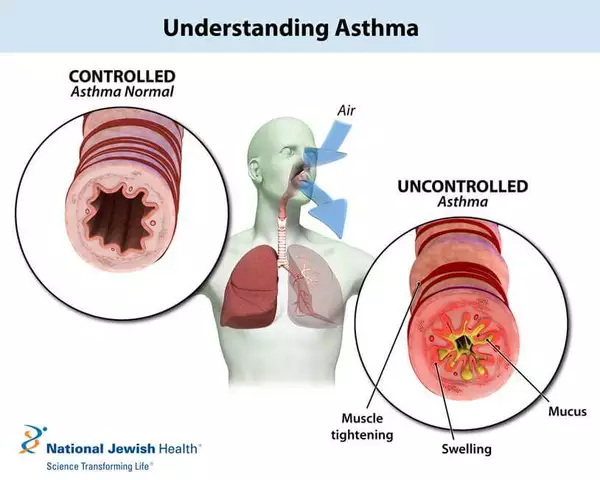Recognizing the Early Warning Signs of an Asthma Attack
As an asthma sufferer, it's essential to be familiar with the early warning signs of an asthma attack. These signs may appear before you even notice any difficulty in breathing. Recognizing these signs can help you take appropriate action to prevent a full-blown asthma attack. Some common early warning signs include:
- Frequent coughing, especially at night
- Shortness of breath or feeling out of breath during regular activities
- Tightness in the chest
- Wheezing or a whistling sound when breathing
- Increased mucus production
- Difficulty sleeping due to asthma symptoms
Pay attention to your body and be aware of these early warning signs. By doing so, you can take proactive measures to manage your asthma and prevent an attack from becoming severe.
The Role of Triggers in Asthma Attacks
Asthma attacks are often triggered by specific factors in the environment or by certain activities. Identifying and avoiding your triggers can help you reduce the frequency and severity of asthma attacks. Common triggers include:
- Allergens, such as pollen, mold, dust mites, and pet dander
- Airborne irritants, like cigarette smoke, pollution, and strong odors
- Exercise or physical activity, especially in cold weather
- Respiratory infections, such as colds and flu
- Emotional stress or anxiety
- Weather changes, including cold air, humidity, and sudden temperature changes
Knowing your triggers and taking steps to avoid them can help you better manage your asthma and prevent attacks. You should also work with your healthcare provider to develop a personalized asthma action plan that includes strategies for avoiding triggers and managing symptoms.
How to Use Your Asthma Medications Effectively
Using your asthma medications correctly is crucial in managing your symptoms and preventing attacks. Asthma medications are generally divided into two categories: long-term control medications and quick-relief medications.
Long-term control medications, such as inhaled corticosteroids, are taken daily to reduce inflammation in the airways and prevent asthma symptoms. It's important to take these medications consistently, even when you feel well, to maintain their effectiveness.
Quick-relief medications, also known as rescue medications or bronchodilators, are used to provide rapid relief of asthma symptoms during an attack. These medications should be taken as soon as you notice the early warning signs of an attack or when you experience difficulty breathing.
Make sure you understand how to use your inhaler or nebulizer correctly and follow your healthcare provider's instructions for using your medications. Proper technique and adherence to your treatment plan are essential for managing asthma effectively.
Creating an Asthma Action Plan
An asthma action plan is a personalized, written plan that helps you manage your asthma and prevent attacks. It includes information about your daily medications, how to recognize and manage worsening symptoms, and when to seek emergency medical care. Your healthcare provider can help you create an asthma action plan that is tailored to your specific needs.
Some key elements of an asthma action plan include:
- A list of your asthma medications and instructions on how and when to take them
- How to monitor your asthma symptoms and recognize when they are getting worse
- Instructions for adjusting your medications when needed
- How to identify and avoid your asthma triggers
- When to seek emergency medical care
Having a well-developed asthma action plan can help you take control of your asthma and feel confident in managing your symptoms. Be sure to review and update your action plan regularly with your healthcare provider, especially if your symptoms change.
Managing Exercise-Induced Asthma
Exercise-induced asthma occurs when physical activity triggers asthma symptoms. This doesn't mean that you should avoid exercise if you have asthma. In fact, regular physical activity can help improve your overall lung health and reduce the severity of asthma symptoms. However, it's important to manage exercise-induced asthma effectively so that you can stay active and healthy.
Some tips for managing exercise-induced asthma include:
- Warming up with gentle exercises for at least 10 minutes before engaging in more intense activities
- Choosing activities that are less likely to trigger asthma symptoms, such as swimming, yoga, or walking
- Exercising indoors when outdoor air quality is poor or when pollen counts are high
- Using your quick-relief medication before exercising, as instructed by your healthcare provider
- Monitoring your asthma symptoms during and after exercise, and adjusting your activities as needed
By following these tips and working closely with your healthcare provider, you can enjoy the benefits of exercise while managing your asthma effectively.
When to Seek Emergency Medical Care for an Asthma Attack
While many asthma attacks can be managed at home with your quick-relief medication and asthma action plan, some attacks may require emergency medical care. It's essential to recognize the signs of a severe asthma attack and know when to seek help.
Signs that you should seek emergency medical care for an asthma attack include:
- Your quick-relief medication is not providing relief or is only providing temporary relief
- Your breathing is becoming more difficult, and you cannot speak in complete sentences
- Your lips or fingernails are turning blue or gray
- Your pulse is rapid or irregular
- You are experiencing severe chest pain or pressure
If you experience any of these signs during an asthma attack, do not hesitate to call for emergency medical assistance. Prompt treatment can help prevent a severe asthma attack from becoming life-threatening.









May 9, 2023 AT 17:46
kat pur
I've been living with asthma since I was a kid, and recognizing the nighttime cough was the biggest game-changer for me. Once I started tracking it, I realized how often I was waking up gasping and didn't even realize it was asthma-related. Now I keep my inhaler by my bed and use it at the first sign. Simple, but life-saving.
May 10, 2023 AT 13:14
Vivek Mishra
Triggers are nonsense. I run marathons. I'm fine.
May 11, 2023 AT 11:29
thilagavathi raj
I had an attack during my sister's wedding. The pollen was *savage*. I collapsed in the flower arrangement. The DJ played 'My Heart Will Go On' as they wheeled me out. Drama. But also, valid.
May 12, 2023 AT 22:13
Sandridge Neal
Thank you for this comprehensive and clinically accurate overview. Asthma management requires discipline, consistency, and collaboration with healthcare professionals. I encourage all individuals with respiratory conditions to prioritize their action plans and remain proactive in monitoring symptoms. Your efforts to educate others are commendable and contribute meaningfully to public health literacy.
May 14, 2023 AT 05:30
Diane Thompson
This is just basic stuff you learn in middle school health class. Why is this even a post? I've had asthma since '07 and I know all this. Also, why no mention of vaping? Just saying.
May 15, 2023 AT 18:08
Reginald Matthews
I've noticed my symptoms get worse when I'm stressed, but I never connected it until I started journaling. Now I track my mood alongside peak flow readings. It's weirdly helpful. Also, I didn't realize cold air was a trigger until I moved to Minnesota. Who knew?
May 17, 2023 AT 00:58
Debra Callaghan
People who say 'just breathe' during an attack are the reason asthma is misunderstood. It's not a choice. It's not laziness. It's not anxiety. It's a medical emergency. Stop gaslighting people with chronic illness.
May 18, 2023 AT 12:59
Mitch Baumann
I must say - this piece, while *admirably* structured - lacks the nuanced, biophilic discourse one might expect from a truly elevated discourse on respiratory pathophysiology. 🤔 Also, have you considered the quantum entanglement of allergens with emotional resonance? 🌿✨
May 20, 2023 AT 06:04
Samuel Wood
I use my inhaler but sometimes I forget to shake it. I think it still works tho? Also, I read somewhere that sugar makes it worse? Not sure if that's true but I stopped eating cake.
May 21, 2023 AT 19:37
ridar aeen
I hate how people treat asthma like it's a minor inconvenience. My kid had to be hospitalized last winter because someone told her to 'just tough it out.' You don't get to decide how bad someone's breathing is. This post is good. But it's not enough.
May 21, 2023 AT 21:17
chantall meyer
In my village, we use neem leaves and steam. Works better than inhalers. But then again, you're probably too modern to care.
May 23, 2023 AT 08:23
Lorne Wellington
To everyone here - whether you're new to asthma or have lived with it for decades, you're not alone. 🫂 I've coached dozens of people through their first attack, and the biggest thing I've learned? Trust your body. Even if the world tells you it's 'just anxiety' or 'you're overreacting' - your breath matters. Keep using your action plan. Keep speaking up. And if you're reading this and you're scared? You're allowed to be. But you're also allowed to live well. You've got this.